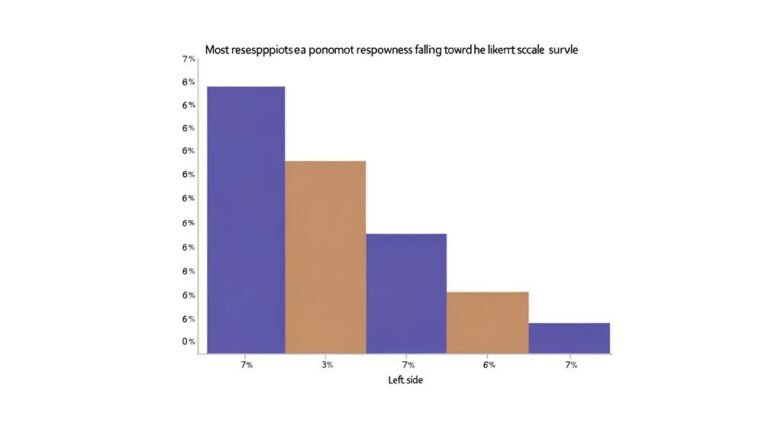What Is Organizational Culture?
Organizational culture, a term frequently mentioned in business circles, encapsulates the essence of a company's identity and operational ethos. It goes beyond mere mission statements and extends into the unspoken norms and behaviors that shape an organization's DNA.
Understanding this complex interplay of values and practices is pivotal for leaders navigating the intricate landscape of modern-day business. By peeling back the layers of organizational culture, one can uncover a wealth of insights into what truly drives employee engagement, shapes strategic decision-making, and ultimately propels an organization towards success.
Key Takeaways
- Organizational culture shapes employee behavior, values, and decision-making processes.
- Culture influences company performance, employee satisfaction, and innovation levels.
- Building a strong culture requires shared values, communication, and leadership alignment.
- Challenges in shaping culture include resistance to change, global cultural differences, and balancing stability with innovation.
Definition of Organizational Culture
Organizational culture is the collective set of values, beliefs, and behaviors that shape the identity and operational dynamics of a company.
Cultural dynamics within an organization encompass the norms, traditions, and unwritten rules that influence how employees interact and work together. These cultural elements can significantly impact the workplace environment, affecting communication, decision-making processes, and overall employee satisfaction.
A strong organizational culture fosters a sense of belonging and shared purpose among employees, leading to increased productivity and engagement. Conversely, a toxic or misaligned culture can result in high turnover rates, decreased morale, and hindered performance.
Understanding and actively managing cultural dynamics is crucial for cultivating a positive and thriving workplace environment that supports the organization's goals and objectives.
Types of Culture Models
Within the realm of organizational dynamics, various models delineate the diverse cultural frameworks that shape the ethos and operational paradigms of companies. Cultural dynamics play a crucial role in understanding organizational behavior and effectiveness.
Models such as Clan, Adhocracy, Market, and Hierarchy provide insights into the different approaches companies adopt. Change management becomes essential when transitioning between these cultural models to ensure a smooth integration process. Innovation culture is fostered in Adhocracy models, emphasizing agility and learning from failures.
Global integration necessitates understanding and reconciling cultural differences within multinational organizations. By recognizing and leveraging these diverse culture models, companies can navigate challenges, drive growth, and achieve sustainable success in an ever-evolving business landscape.
Building a Strong Culture
Cultural dynamics within organizations play a pivotal role in shaping operational paradigms and fostering a conducive environment for growth and success. Building a strong culture involves team bonding, employee engagement, leadership influence, and values alignment. By establishing shared values and a common culture, organizations can ensure unity and goal alignment. Leadership behavior sets the tone for the organizational culture, influencing employee attitudes and behaviors. Here is a table illustrating key elements in building a strong culture:
| Key Elements | Description | Importance |
|---|---|---|
| Team Bonding | Encouraging collaboration and camaraderie | Fosters a sense of unity |
| Employee Engagement | Involving employees in decision-making | Boosts motivation |
| Leadership Influence | Setting an example for cultural norms | Shapes organizational values |
Creating a culture committee and rewarding employees for upholding values can further reinforce the desired culture.
Cultural Importance in Business
In the realm of modern business dynamics, the significance of organizational culture cannot be understated, as it serves as a fundamental pillar influencing various facets of operations and outcomes. Cultural alignment within a business ensures that employees are working towards shared goals and values, promoting unity and coherence in actions.
This alignment fosters a sense of belonging and purpose among employees, leading to higher levels of engagement and productivity. Employee engagement, a crucial component of organizational culture, plays a significant role in employee satisfaction, retention, and overall performance.
When employees are engaged with the culture and values of the organization, they are more likely to be motivated, innovative, and committed to achieving common objectives. A strong organizational culture that prioritizes cultural alignment and employee engagement can drive business success and sustainability.
Key Cultural Elements
Amidst the intricate fabric of organizational culture lies a set of foundational elements that underpin the essence and operational dynamics of a business entity.
Cultural rituals and ceremonies play a pivotal role in reinforcing the values and norms of an organization, creating a sense of belonging and unity among employees. Employee engagement, fostered through these rituals, is crucial for productivity and morale.
Leadership influence is another key element, as the behavior of leaders sets the tone for the entire organizational culture. Effective communication styles within the company dictate how information flows, impacting decision-making and teamwork.
These elements collectively shape the culture, influencing employee attitudes, performance, and the overall success of the organization.
Challenges in Cultural Development
Navigating the complexities of organizational culture development presents various challenges that require strategic foresight and adaptability. In the pursuit of shaping a thriving culture within an organization, the following challenges must be addressed:
- Overcoming resistance: Existing employees comfortable with the current culture may resist change, necessitating careful communication and change management strategies.
- Global alignment: Cultural differences in global organizations can lead to misalignment, requiring a nuanced approach to foster understanding and cohesion across diverse teams.
- Balancing stability and innovation: It is crucial to strike a balance between maintaining cultural stability and fostering innovation to ensure organizational growth and competitiveness.
Impact on Employee Satisfaction
Given the challenges in cultural development, understanding the impact of organizational culture on employee satisfaction is essential for fostering a cohesive and productive work environment. Employee engagement, retention, workplace morale, and productivity are profoundly influenced by the organizational culture. A positive culture that values employee well-being and recognizes their contributions leads to higher job satisfaction and increased retention rates. When employees feel connected to the organization's values and mission, their morale and motivation are boosted, resulting in enhanced productivity levels. Investing in shaping a culture that prioritizes employee satisfaction not only improves individual performance but also contributes to the overall success and growth of the organization.
| Employee Engagement | Retention | Workplace Morale |
|---|---|---|
| Alignment with company values | Recognition of achievements | Positive relationships |
| Opportunities for growth | Supportive environment | Clear communication |
| Involvement in decision-making | Competitive benefits | Opportunities for development |
Influence on Company Performance
The organizational culture of a company significantly influences its overall performance and success in the competitive business landscape. When considering the influence of organizational culture on company performance, several key aspects come into play:
- Performance Metrics: A strong culture can lead to improved performance metrics as employees are more engaged, motivated, and aligned with the organization's goals.
- Employee Engagement: Culture affects employee engagement levels, impacting productivity, retention rates, and overall job satisfaction.
- Leadership Influence and Team Dynamics: The leadership style and behaviors within a company greatly impact its culture, which in turn influences team dynamics, collaboration, and the ability to achieve collective goals.
Strategies for Culture Improvement
In light of the significant influence that organizational culture holds over company performance, implementing strategic initiatives for culture improvement is paramount for sustaining a competitive edge in today's dynamic business environment.
To enhance culture, organizations can focus on strategies such as boosting employee engagement and retention through transparent communication channels and leadership development programs. Engaging employees in decision-making processes, providing growth opportunities, and fostering open communication channels can significantly impact culture positively.
Leadership development initiatives that promote values alignment, empower employees, and encourage continuous learning can also contribute to a healthier organizational culture. By focusing on these aspects, companies can create a more cohesive and thriving work environment that ultimately drives success and long-term sustainability.
Cultivating a Positive Work Environment
To foster a positive work environment conducive to employee well-being and productivity, organizations must prioritize the cultivation of a supportive and inclusive culture. This can be achieved through:
- Fostering Collaboration: Encouraging teamwork, open communication, and knowledge sharing among employees enhances creativity and problem-solving abilities. Collaborative environments also promote a sense of belonging and mutual respect among team members.
- Promoting Well-being: Prioritizing employee health, mental wellness, and work-life balance through initiatives like flexible work hours, wellness programs, and mental health support can enhance job satisfaction and overall productivity. Well-being initiatives demonstrate an organization's commitment to its employees' holistic welfare.
- Creating a Positive Feedback Culture: Implementing regular feedback mechanisms and recognition programs can boost morale, motivation, and employee engagement. Positive reinforcement fosters a culture of continuous improvement and appreciation, leading to increased job satisfaction and loyalty.
Conclusion
In conclusion, organizational culture serves as the bedrock of a company, shaping its values, behaviors, and overall environment. Like a guiding light in a stormy sea, a strong culture can steer an organization towards success by fostering cohesion, attracting talent, and driving innovation.
By understanding the key elements of culture and implementing strategies for improvement, leaders can cultivate a positive work environment that enhances employee satisfaction and ultimately impacts company performance.







